The United States is home to some of the most spectacular and diverse national parks in the world, offering everything from rugged mountains and serene forests to vast deserts and arctic wilderness.
These parks preserve the natural beauty, wildlife, and cultural heritage of the country, providing a sanctuary for both nature and adventure lovers. Covering millions of acres, the largest national parks in the US are unparalleled in their scale and diversity, and we’ll explore the largest 20 in this post.
| Rank | National Park Name | State(s) | Size in Acres |
|---|---|---|---|
| 1 | Wrangell–St. Elias National Park and Preserve | Alaska | 13,175,799 |
| 2 | Gates of the Arctic National Park and Preserve | Alaska | 7,523,897 |
| 3 | Denali National Park and Preserve | Alaska | 4,479,911 |
| 4 | Katmai National Park and Preserve | Alaska | 3,674,529 |
| 5 | Death Valley National Park | California, Nevada | 3,408,396 |
| 6 | Glacier Bay National Park and Preserve | Alaska | 3,233,383 |
| 7 | Lake Clark National Park and Preserve | Alaska | 2,619,816 |
| 8 | Yellowstone National Park | Wyoming, Montana, Idaho | 2,219,791 |
| 9 | Kobuk Valley National Park | Alaska | 1,750,716 |
| 10 | Everglades National Park | Florida | 1,508,939 |
| 11 | Grand Canyon National Park | Arizona | 1,201,647 |
| 12 | Glacier National Park | Montana | 1,013,126 |
| 13 | Olympic National Park | Washington | 922,649 |
| 14 | Big Bend National Park | Texas | 801,163 |
| 15 | Joshua Tree National Park | California | 795,156 |
| 16 | Yosemite National Park | California | 761,748 |
| 17 | Kenai Fjords National Park | Alaska | 669,650 |
| 18 | Isle Royale National Park | Michigan | 571,590 |
| 19 | Great Smoky Mountains National Park | North Carolina, Tennessee | 522,427 |
| 20 | North Cascades National Park | Washington | 504,781 |
20. North Cascades National Park
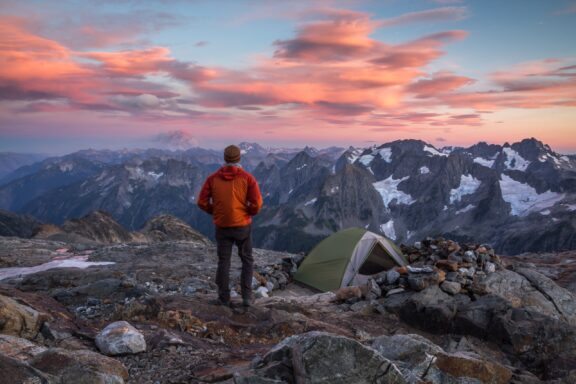
Park size: 504,781 acres (2,043 km2)
State: Washington
North Cascades National Park, established in 1968, is located in the state of Washington. It is renowned for its rugged terrain, with parts of the park being some of the most impenetrable wilderness in the United States.
The park boasts a diverse range of ecosystems, from lush valleys to craggy peaks, with more than 300 glaciers—more than any other U.S. park outside Alaska. The geology is defined by dramatic mountain ranges formed by the collision of the Pacific and North American tectonic plates, leading to the uplift of the Cascade Range.
Flora and fauna are equally diverse, with old-growth forests housing species such as the gray wolf, grizzly bear, and more than 200 species of birds. The park faces challenges such as glacier retreat due to climate change, which impacts water flow in rivers essential for salmon spawning.
19. Great Smoky Mountains National Park
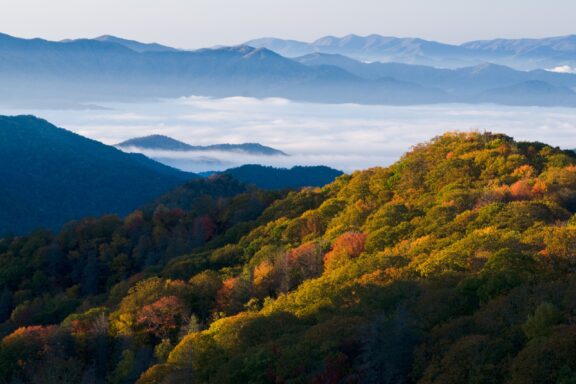
Park size: 522,427 acres (2,114 km2)
States: North Carolina, Tennessee
Great Smoky Mountains National Park, established in 1934, straddles the border between North Carolina and Tennessee. It is the most visited national park in the United States, drawing millions of visitors annually due to its accessibility and the vast array of activities it offers.
The park’s rich biodiversity is a significant draw, hosting over 1,500 flowering plant species, more than any other national park in the country. Its ancient mountains are a haven for wildlife, including black bears, elk, and over 200 species of birds.
For hikers and outdoor enthusiasts, the park boasts an extensive network of trails, including a portion of the Appalachian Trail. Popular hikes such as the Charlies Bunion, Alum Cave Bluffs, and the Chimney Tops offer breathtaking views.
18. Isle Royale National Park
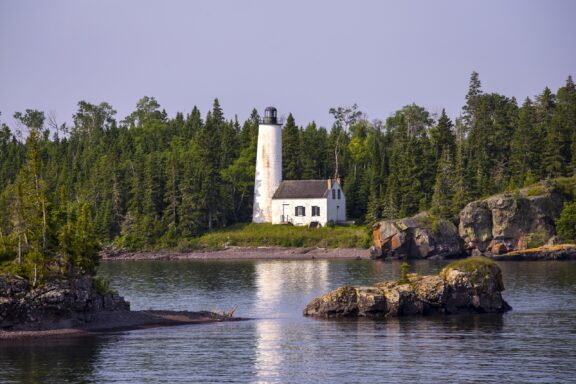
Park size: 571,590 acres (2,314 km2)
State: Michigan
Isle Royale National Park, established in 1940, is a remote island in Lake Superior, Michigan. Known for its rugged wilderness and isolation, the park is accessible only by boat or seaplane, offering a unique, secluded experience. The island’s isolation has made it a key study area for wildlife, notably the moose and wolf populations, which have been subjects of the longest-running predator-prey study in the world.
The park’s landscape is characterized by dense forests, crystal-clear lakes, and scenic shorelines, with the Greenstone Ridge Trail running the island’s length, providing spectacular views.
Challenges include maintaining the delicate balance between the moose and wolf populations and preserving the pristine environment amidst increasing visitor numbers. Isle Royale closes in winter, emphasizing conservation and research.
17. Kenai Fjords National Park
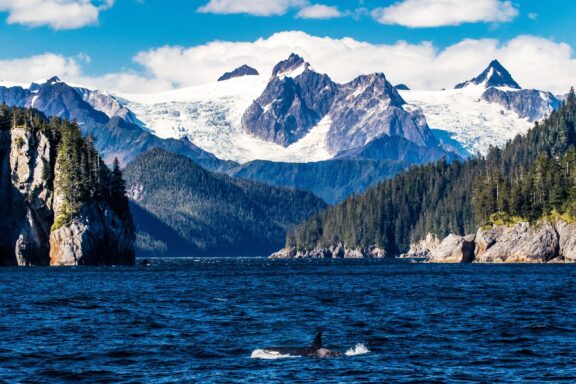
Park size: 669,650 acres (2,710 km2)
States: Alaska
Kenai Fjords National Park, established in 1980, is located in Alaska, near the town of Seward. It’s renowned for its dramatic ice-sculpted landscapes, encompassing over 40 glaciers flowing from the Harding Icefield, one of the largest ice fields in the United States.
This park offers a glimpse into a frozen world, where glaciers carve the land and create stunning fjords that reach into the heart of the park. The park’s rich marine ecosystems support abundant wildlife, including sea otters, seals, and humpback whales.
Visitors can explore the park through boat tours, which provide up-close views of the glaciers and marine wildlife, or hike the trails that offer panoramic views of the ice field.
16. Yosemite National Park
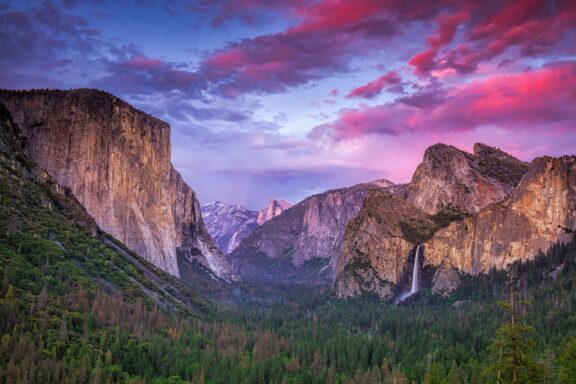
Park size: 561,748 acres (3,083 km2)
State: California
Yosemite National Park, established in 1890, is located in California’s Sierra Nevada mountains. It’s famed for its giant, ancient sequoia trees, and for Tunnel View, the iconic vista of towering Bridalveil Fall and the granite cliffs of El Capitan and Half Dome.
The park covers an area of over 747,956 acres, featuring diverse ecosystems ranging from lush meadows to vast wilderness areas. Yosemite is a key habitat for wildlife, including black bears, deer, and various bird species, thriving amidst its diverse flora.
Significant challenges Yosemite faces include managing the impact of over four million visitors annually. Efforts to preserve its natural beauty while accommodating tourists include restricting vehicle access in the valley, encouraging shuttle use, and implementing strict wildlife protection measures.
15. Joshua Tree National Park
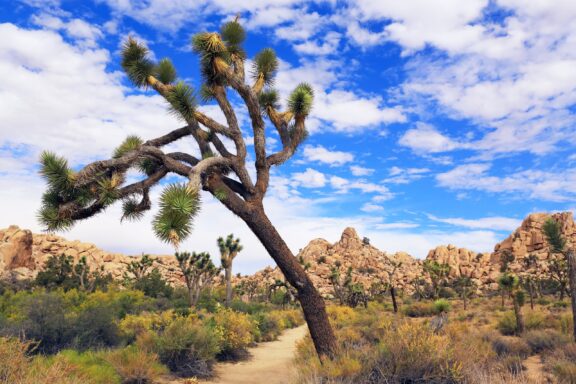
Park size: 795,156 acres (3,218 km2)
State: California
Joshua Tree National Park, established in 1994, spans the intersection of two distinct desert ecosystems: the Mojave and the Colorado. Located in southeastern California, the park is named after the Joshua trees (Yucca brevifolia) native to the Mojave Desert portion.
The park’s landscape is marked by rugged rock formations and stark desert landscapes, making it a popular destination for climbers, hikers, and photographers. The clear desert skies also offer exceptional conditions for stargazing.
Flora and fauna here have adapted to the extreme desert conditions, with species such as the desert tortoise and bighorn sheep calling it home. The park’s vegetation includes the Joshua tree, with its unique shape, and a variety of cacti and wildflowers that bloom in the spring.
14. Big Bend National Park
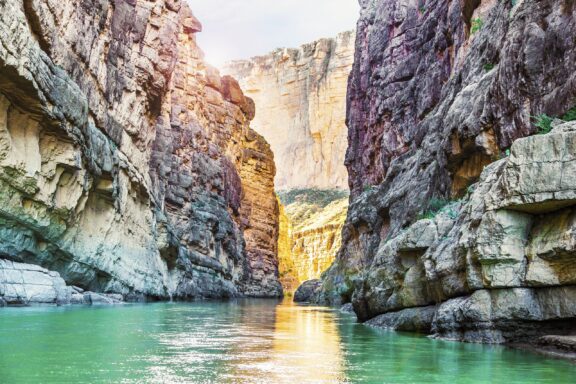
Park size: 801,163 acres (3,242 km2)
State: Texas
Big Bend National Park, located in West Texas, borders Mexico along the Rio Grande. Established in 1944, it encompasses over 800,000 acres, making it one of the largest national parks in the United States. The park is named for the prominent bend in the river and is known for its diverse ecosystems, geological features, and extensive history.
The park’s varied landscapes range from the Chisos Mountains to vast desert expanses and river canyons. This diversity supports a wide range of flora and fauna, including more than 1,200 plant species, over 450 bird species, and numerous mammals, reptiles, and amphibians.
Big Bend is also rich in cultural history, with evidence of human habitation dating back over 9,000 years. Visitors can explore this history through various archaeological sites and historical structures within the park.
13. Olympic National Park
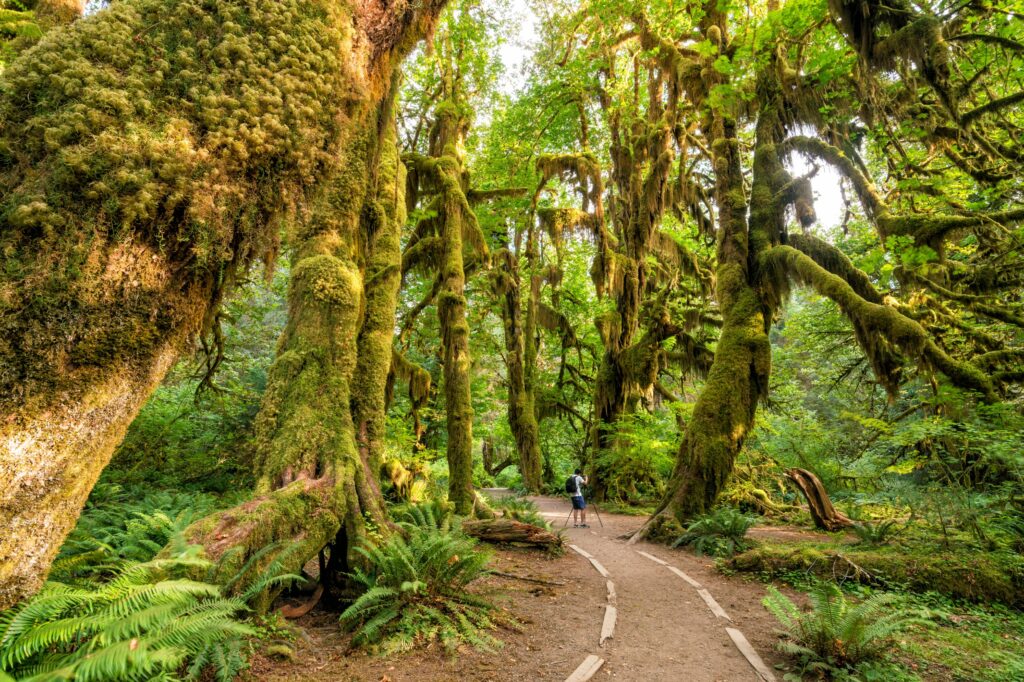
Park size: 922,649 acres (3,734 km2)
State: Washington
Olympic National Park, established in 1938, is located in the northwest corner of Washington state on the Olympic Peninsula. This vast park spans nearly a million acres, encompassing three distinct ecosystems: the Pacific coastline, alpine areas, and the temperate rainforest, making it a unique and diverse natural reserve.
The park’s rugged coastline offers dramatic seascapes, tide pools, and sandy beaches, while its interior boasts towering mountain peaks, some of which are capped with glaciers. The Hoh and Quinault Rainforests are renowned for their massive old-growth trees, lush vegetation, and abundant rainfall, creating an almost otherworldly landscape.
Popular activities in the park include hiking, backpacking, and wildlife viewing, with over 600 miles of trails. The park also faces ongoing conservation challenges, such as climate change affecting its glaciers and ecosystems.
12. Glacier National Park
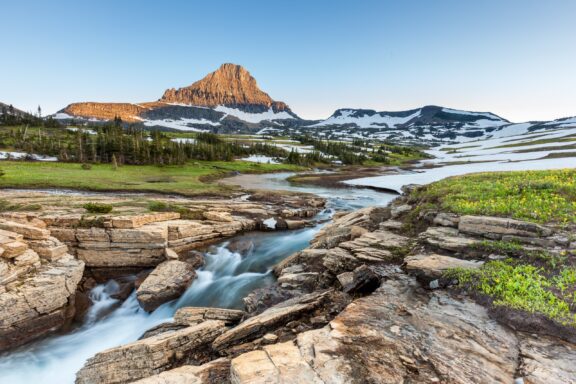
Park size: 1,013,126 acres (4,100 km2)
State: Montana
Glacier National Park, located in Montana’s Rocky Mountains, was established in 1910, becoming the tenth national park in the county. Known for its stunning landscapes, the park spans over a million acres and includes parts of two mountain ranges, over 130 named lakes, and more than 1,000 different species of plants.
The park’s name derives from the numerous glaciers that were present at the time of its designation. However, climate change poses a significant threat, with many of the glaciers rapidly retreating. Scientists project that if current warming trends continue, all of Glacier’s iconic glaciers could disappear within the century.
Visitors to Glacier National Park can explore its beauty through scenic drives, such as the Going-to-the-Sun Road, which offers breathtaking views of the park’s rugged terrain and is considered an engineering marvel. Hiking is also popular, with trails leading to waterfalls, clear alpine lakes, and glacier viewpoints.
11. Grand Canyon National Park
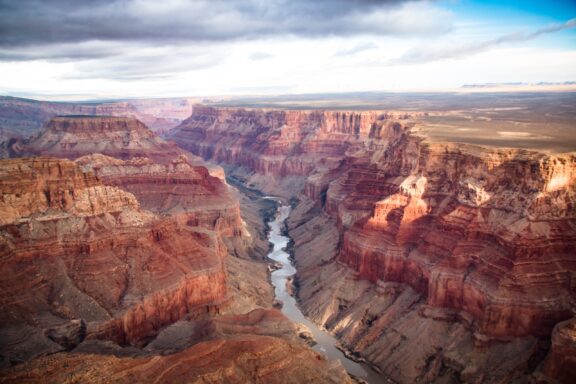
Park size: 1,201,647 acres (4,863 km2)
State: Arizona
Grand Canyon National Park, one of the world’s premier natural attractions, attracts millions of visitors each year. Established in 1919 in Arizona, the park is centered around the Grand Canyon, a colossal gorge carved by the Colorado River over millions of years. The canyon is renowned for its visually overwhelming size, and intricate, colorful landscapes.
The park covers an area of over 1.2 million acres, with the canyon itself being 277 miles long, up to 18 miles wide, and over a mile deep. The North and South Rims offer different experiences and vistas, with the South Rim being more accessible and thus more popular with visitors throughout the year.
The Grand Canyon is a significant geological resource, providing a record of three of the four eras of geological time, a rich diversity of fossils, and numerous caves with extensive speleothems.
10. Everglades National Park
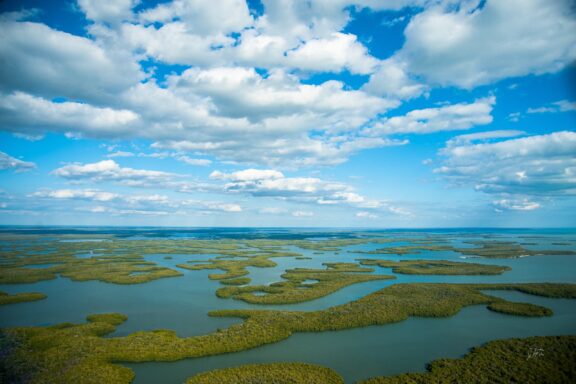
Park size: 1,508,939 acres (6,107 km2)
State: Florida
Everglades National Park, established in 1947, is located in southern Florida. It is the largest tropical wilderness of any kind in the US and is renowned for its unique ecosystem and wildlife. The park spans 1.5 million acres and is a World Heritage Site, International Biosphere Reserve, and Wetland of International Importance.
The Everglades is primarily a water-based ecosystem, famous for its slow-moving river that flows out of Lake Okeechobee into Florida Bay. It’s home to a diverse array of wildlife, including numerous species of birds, reptiles, and mammals. Notably, it provides critical habitat for endangered species such as the Florida panther, American crocodile, and the West Indian manatee.
Visitors can explore the Everglades through various means, including airboat tours, canoeing, and hiking trails. The Anhinga Trail is one of the most popular paths, offering close views of alligators, turtles, and many birds.
9. Kobuk Valley National Park
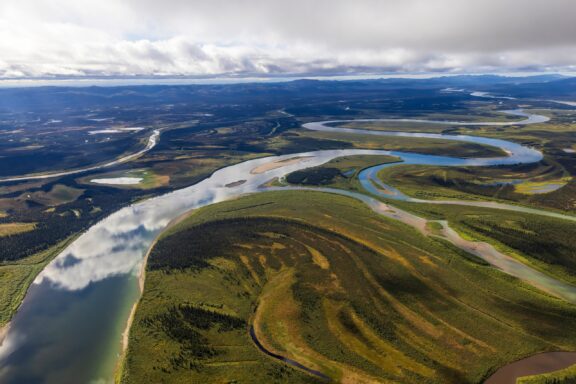
Park size: 1,750,716 acres (7,085 km2)
State: Alaska
Kobuk Valley National Park, established in 1980, is located in northwestern Alaska, far removed from the beaten path. This remote park spans over 1.7 million acres and is notable for its vast sand dunes, the Great Kobuk Sand Dunes, which are a striking contrast to the typical Alaskan landscape of icy wilderness.
The park is also home to the Kobuk River, which is a critical migration route for the Western Arctic caribou herd. Each year, the herd, numbering in the hundreds of thousands, migrates across the park, providing a spectacular wildlife viewing opportunity.
Kobuk Valley’s isolation means it receives very few visitors each year, offering a truly wild experience. There are no roads or trails into the park, making access possible only by foot, dogsled, snowmobile, or air taxi.
8. Yellowstone National Park
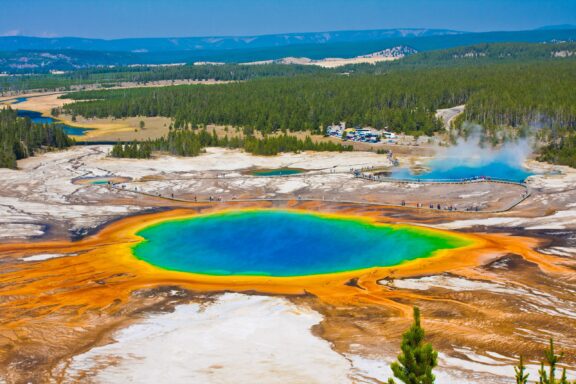
Park size: 2,219,791 acres (8,983 km2)
States: Wyoming, Montana, Idaho
Yellowstone National Park, established in 1872, was the first national park in the United States. Located primarily in Wyoming, it stretches into parts of Montana and Idaho. Yellowstone covers over 2.2 million acres, featuring a vast array of geothermal features, including geysers, hot springs, mudpots, and fumaroles, with Old Faithful being its most iconic geyser.
Yellowstone is also renowned for its wildlife, with the park being one of the few places in the United States where you can see large herds of bison roaming freely. Additionally, it’s home to wolves, bears, elk, and a rich diversity of other wildlife, making it a critical area for conservation and research.
Challenges facing Yellowstone include managing visitor impact, especially in popular areas, and addressing issues related to wildlife conservation, such as the management of wolf populations and the protection of bison while maintaining the ecological balance.
7. Lake Clark National Park and Preserve
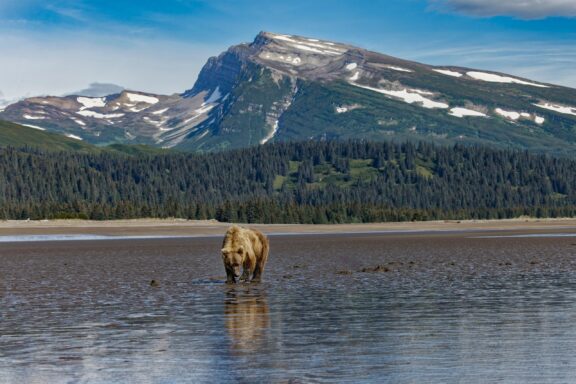
Park size: 2,619,816 acres (10,602 km2)
State: Alaska
Lake Clark National Park and Preserve, established in 1980, is located in southwestern Alaska. This relatively unknown gem offers a stunning array of landscapes, including mountains, lakes, rivers, and tundra, spanning over four million acres. The park features Lake Clark, an approximately 50-mile-long body of water, which is a vital habitat for salmon and many bird species.
Lake Clark’s diverse ecosystems support a wide range of wildlife, including brown bears, which are often seen fishing for salmon in the park’s rivers and streams. The park also provides habitat for caribou, moose, and wolves.
The park’s remote wilderness offers unparalleled opportunities for solitude and adventure. Activities such as hiking, kayaking, and fishing are popular among visitors seeking an authentic Alaskan experience. Access to the park is limited to air travel, with small planes offering entry to this untouched landscape.
6. Glacier Bay National Park and Preserve
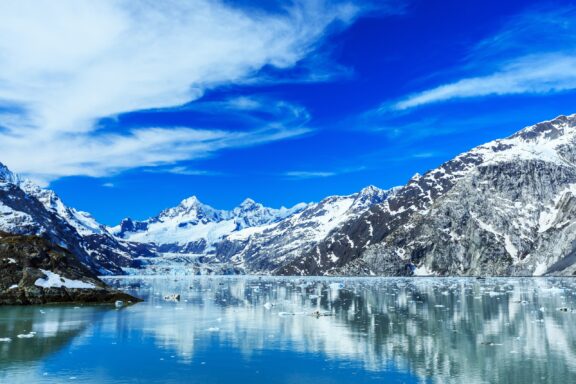
Park size: 3,233,383 acres (13,045 km2)
State: Alaska
Glacier Bay National Park and Preserve, established in 1980 in Alaska, spans over 3.3 million acres of mountains, glaciers, forests, and oceans. It’s renowned for its dynamic glacial landscape, which is continuously shaped by the advancing and retreating glaciers.
The park is a living laboratory for scientists studying glacial morphology and climate change, and it’s a critical habitat for a wide range of wildlife, including humpback whales, sea otters, and bald eagles.
Visitors to Glacier Bay can experience the awe-inspiring sight of calving glaciers, where huge chunks of ice break off and crash into the sea. The park is accessible primarily by boat, offering unique opportunities for kayaking, fishing, and whale watching amidst its spectacular fjords and waterways.
Managing the impact of tourism and climate change remains a challenge, with efforts focused on sustainable visitation practices and environmental stewardship to preserve this magnificent landscape for future generations.
5. Death Valley National Park
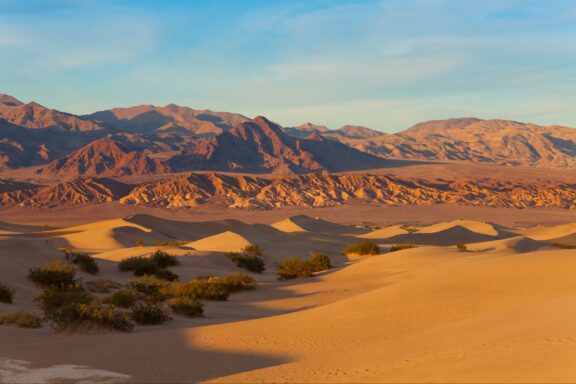
Park size: 3,408,396 acres (13,793 km2)
States: California, Nevada
Death Valley National Park, designated in 1994, is located in California and Nevada and is known as the hottest, driest, and lowest national park in the United States. Covering over 3.4 million acres, it offers a diverse landscape of sand dunes, salt flats, badlands, valleys, and mountains.
The park’s below-sea-level basin, Badwater Basin, sits at 282 feet below sea level, making it a point of extreme heat, especially in the summer when temperatures can soar above 120°F. Despite its harsh climate, Death Valley supports a variety of life adapted to the arid environment, including unique plant species and wildlife such as bighorn sheep and coyotes.
Visitors are drawn to spectacular sights such as the Racetrack Playa, where rocks mysteriously move across the dry lake bed, and the colorful vistas of Artist’s Palette.
4. Katmai National Park and Preserve
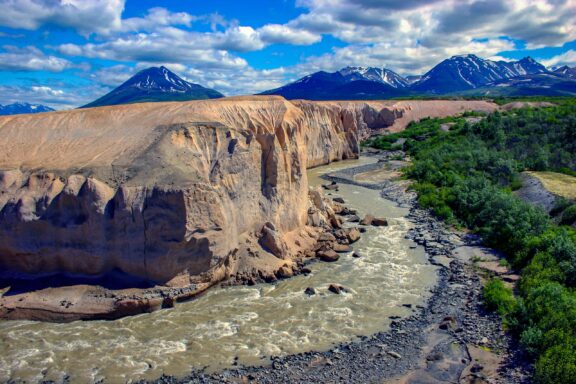
Park size: 3,674,529 acres (14,870 km2)
States Alaska
Katmai National Park and Preserve, located in southern Alaska, was established in 1918 to protect the area around Novarupta and the Valley of Ten Thousand Smokes, the site of the largest volcanic eruption of the 20th century. Covering over 4 million acres, Katmai is a stunning wilderness area known for its brown bear population, with more than 2,000 bears that come to feast on salmon in the Brooks River.
The park’s landscape is marked by its volcanic history, including 15 active volcanoes. Visitors are drawn to the unique experience of viewing bears in their natural habitat, particularly at Brooks Falls, where bears can be seen catching leaping salmon. Other activities include fishing, kayaking, and exploring the backcountry.
Conservation efforts are focused on protecting the natural behaviors of the bear population and preserving the park’s wilderness character.
3. Denali National Park and Preserve
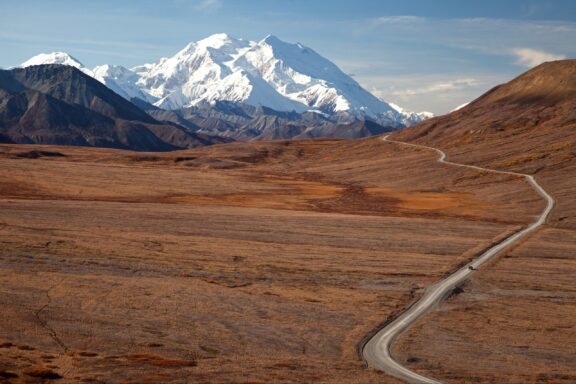
Park size: 4,479,911 acres (19,186 km2)
State: Alaska
Denali National Park and Preserve, established in 1917, is located in Interior Alaska and is home to Denali (formerly Mount McKinley), North America’s highest peak, standing at 20,310 feet.
The park spans over 6 million acres, featuring a diverse wilderness of forests at lower elevations, alpine tundra at middle elevations, and glaciers, rock, and snow at the highest elevations.
Denali’s landscape supports a variety of wildlife, including grizzly bears, wolves, Dall sheep, and caribou. The park’s single road, Denali Park Road, offers visitors a chance to see the vast landscape and wildlife in their natural setting.
A key challenge for the park is balancing visitor access with conservation efforts to protect its unique ecosystem. Activities such as bus tours along Denali Park Road, backcountry hiking, and mountaineering are popular, with permits required for some to minimize human impact.
2. Gates of the Arctic National Park and Preserve
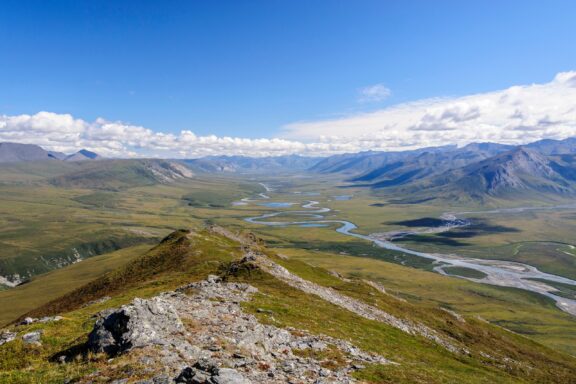
Park size: 7,523,897 acres (30,488 km2)
State: Alaska
Gates of the Arctic National Park and Preserve, established in 1980, is located in northern Alaska, representing one of the last truly wild places in the United States. Spanning over 7.5 million acres, it is the second-largest national park in the U.S. This park is characterized by its untouched wilderness, without roads or trails, offering a sanctuary for people seeking solitude and a wilderness experience.
The landscape is dominated by the Brooks Range, with vast valleys, rugged mountains, and countless rivers and lakes providing habitat for wildlife such as caribou, grizzly bears, and wolves. The park’s name comes from the two mountains that frame the Koyukuk River, resembling gates to the Arctic.
Visitors to Gates of the Arctic can engage in activities like backpacking, river rafting, and wildlife viewing, though such adventures require thorough preparation and respect for the extreme environment.
1. Wrangell–St. Elias National Park and Preserve
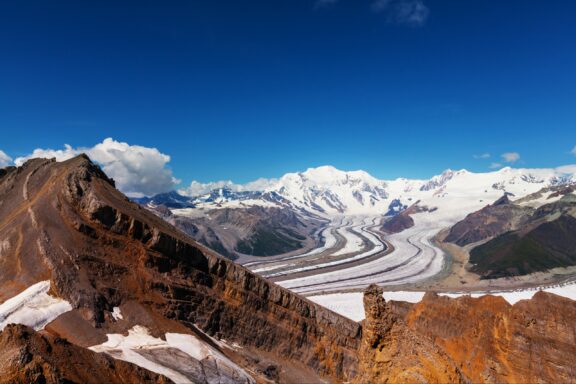
Park size: 13,175,799 acres (53,321 km2)
State: Alaska
Wrangell–St. Elias National Park and Preserve, established in 1980, is the largest national park in the United States, covering over 13 million acres in eastern Alaska. It’s a land of immense natural beauty and diversity, featuring mountains, glaciers, rivers, and forests. The park includes nine of the sixteen highest peaks in the United States, with Mount St. Elias at 18,008 feet being the second-highest peak in the country.
This vast wilderness is home to a rich array of wildlife, including bears, moose, caribou, and Dall sheep. The park’s extensive glaciers, such as the Malaspina Glacier, one of the largest glaciers in the world, offer dramatic landscapes rarely seen elsewhere.
Visitors can explore the park through hiking, mountaineering, kayaking, and flightseeing tours. Despite its size and beauty, Wrangell–St. Elias receives relatively few visitors due to its remote location, offering an unparalleled experience of solitude and untouched wilderness.
Image Sources and Copyright Information
- Hiker Enjoying a Majestic Sunset in North Cascades National Park: © Andrew Bertino/Shutterstock
- Autumn Splendor in the Great Smoky Mountains with Misty Valleys: © Geir Olav Lyngfjell/Shutterstock
- Serene Lighthouse on a Tranquil Island Surrounded by Lush Greenery and Calm Waters: © Steven Schremp/Shutterstock
- Killer Whale Surfacing in Kenai Fjords with Majestic Snow-Capped Mountains in the Background: © Troutnut/Shutterstock
- Vibrant Sunset Over Yosemite Valley with Waterfall and Majestic Cliffs: © Andrew S/Shutterstock
- Iconic Joshua Tree Against a Blue Sky in Joshua Tree National Park: © Bill Florence/Shutterstock
- Santa Elena Canyon with Rio Grande River at Big Bend National Park: © Linda Moon/Shutterstock
- Verdant Pathway Through the Hoh Rain Forest in Olympic National Park: © f11photo/Shutterstock
- Serene Alpine Landscape with Flowing River and Majestic Mountain at Logan Pass, Glacier National Park: © kan_khampanya/Shutterstock
- Breathtaking View of the Grand Canyon with the Colorado River Winding Through the Gorges: © Amanda Mohler/Shutterstock
- Aerial View of the Ten Thousand Islands in the Everglades: © John Apte/Shutterstock
- Aerial View of the Meandering Kobuk River in Kobuk Valley National Park: © BlueBarronPhoto/Shutterstock
- Aerial View of the Grand Prismatic Spring in Yellowstone National Park: © Lorcel/Shutterstock
- Grizzly Bear Clamming in the Shallow Waters of Lake Clark with Mountain Backdrop: © Danita Delimont/Shutterstock
- Panoramic View of Glacier Bay National Park with Majestic Mountains and Icebergs: © SCStock/Shutterstock
- Golden Hour Over the Sand Dunes of Death Valley, California: © Sergey Novikov/Shutterstock
- Rugged Canyon and River Flowing Through Katmai National Park: © CSNafzger/Shutterstock
- Scenic View of a Winding Road Leading Towards Snow-Capped Denali Mountain in Autumn: © Gail Johnson/Shutterstock
- Breathtaking View of the Serpentine River Winding Through the Vast, Untouched Wilderness of Gates of the Arctic National Park, Alaska: © Danita Delimont/Shutterstock
- Panoramic View of Wrangell-St. Elias National Park and Preserve in Alaska with Majestic Glaciers and Rugged Mountains: © Galyna Andrushko/Shutterstock